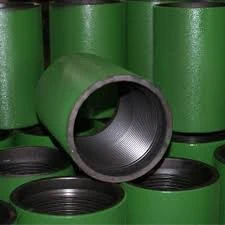- Afrikaans
- Albanian
- Amharic
- Arabic
- Armenian
- Azerbaijani
- Basque
- Belarusian
- Bengali
- Bosnian
- Bulgarian
- Catalan
- Cebuano
- Corsican
- Croatian
- Czech
- Danish
- Dutch
- English
- Esperanto
- Estonian
- Finnish
- French
- Frisian
- Galician
- Georgian
- German
- Greek
- Gujarati
- Haitian Creole
- hausa
- hawaiian
- Hebrew
- Hindi
- Miao
- Hungarian
- Icelandic
- igbo
- Indonesian
- irish
- Italian
- Japanese
- Javanese
- Kannada
- kazakh
- Khmer
- Rwandese
- Korean
- Kurdish
- Kyrgyz
- Lao
- Latin
- Latvian
- Lithuanian
- Luxembourgish
- Macedonian
- Malgashi
- Malay
- Malayalam
- Maltese
- Maori
- Marathi
- Mongolian
- Myanmar
- Nepali
- Norwegian
- Norwegian
- Occitan
- Pashto
- Persian
- Polish
- Portuguese
- Punjabi
- Romanian
- Russian
- Samoan
- Scottish Gaelic
- Serbian
- Sesotho
- Shona
- Sindhi
- Sinhala
- Slovak
- Slovenian
- Somali
- Spanish
- Sundanese
- Swahili
- Swedish
- Tagalog
- Tajik
- Tamil
- Tatar
- Telugu
- Thai
- Turkish
- Turkmen
- Ukrainian
- Urdu
- Uighur
- Uzbek
- Vietnamese
- Welsh
- Bantu
- Yiddish
- Yoruba
- Zulu
coupling blank
Understanding Coupling Blanks The Bridge Between Components in Engineering
In the realm of engineering, especially in mechanical systems, coupling plays a crucial role in connecting two shafts together. One important aspect of this connection is the use of coupling blanks. Understanding what coupling blanks are and their significance can enhance our comprehension of various mechanical systems and their efficiency.
What are Coupling Blanks?
Coupling blanks are essentially the raw materials or pre-formed shapes used to manufacture coupling components. These blanks are typically made from metal or other durable materials that can withstand the mechanical stresses and strains involved in transferring torque between two rotating elements. The material and dimensions of the coupling blank will ultimately dictate the performance, strength, and durability of the finished coupling.
Importance of Coupling Blanks
1. Material Selection The choice of material for coupling blanks is critical. Metals like steel, aluminum, and sometimes plastics or composites are used based on their mechanical properties. Steel offers high tensile strength and resistance to wear, making it suitable for heavy-duty applications. Aluminum, being lighter, can be used in applications where weight savings are a priority. The selected material affects the performance characteristics of the final coupling, such as its ability to handle loads, resist fatigue, and operate under different environmental conditions.
2. Customization and Versatility Coupling blanks can be customized in terms of size, shape, and design to fit specific engineering requirements. This versatility allows engineers to design couplings that meet precise specifications for various applications, from automotive to aerospace, and even in industrial machinery.
coupling blank

3. Manufacturing Processes The transformation from blank to finished coupling involves various manufacturing processes, such as machining, welding, and finishing. Precision machining is often essential for ensuring that the coupling fits properly with the shafts it is meant to connect. Depending on the complexity of the design, additional processes may include heat treatment to enhance strength or surface treatments to improve resistance to corrosion.
4. Reducing Vibrations and Misalignments One of the key functions of coupling is to accommodate misalignment between shafts. Coupling blanks that are properly designed and manufactured can help in reducing vibrations during operation, leading to smoother performance and longer service life. This is particularly important in high-speed applications where vibrations can lead to mechanical failures.
5. Cost Efficiency Using coupling blanks can contribute to cost savings in manufacturing. By using pre-formed materials tailored to specific applications, manufacturers can reduce the amount of machining and finishing required. This not only speeds up production but also minimizes waste, thus optimizing the overall manufacturing process.
Applications of Coupling Blanks
Coupling blanks are used in a diverse range of applications. In the automotive industry, they connect the driveshaft with the wheels, allowing for effective power transfer. In manufacturing, they play a pivotal role in machinery that requires precise movement, such as conveyor systems and robotic arms. Aerospace applications also rely heavily on reliable coupling systems, where safety and performance are paramount.
Conclusion
Coupling blanks serve as a foundational element in the design and manufacturing of couplings in various mechanical systems. Their role cannot be overstated, as they provide the necessary bridge between components that enable efficient power transmission and operational reliability. By understanding the significance of coupling blanks, engineers can make informed decisions that enhance the performance and longevity of mechanical systems, ultimately leading to advancements in technology and engineering practices. As industries continue to evolve, the importance of coupling and coupling blanks will remain a vital aspect of mechanical design and engineering innovation.
-
Tubing Pup Joints: Essential Components for Oil and Gas OperationsNewsJul.10,2025
-
Pup Joints: Essential Components for Reliable Drilling OperationsNewsJul.10,2025
-
Pipe Couplings: Connecting Your World EfficientlyNewsJul.10,2025
-
Mastering Oilfield Operations with Quality Tubing and CasingNewsJul.10,2025
-
High-Quality Casing Couplings for Every NeedNewsJul.10,2025
-
Boost Your Drilling Efficiency with Premium Crossover Tools & Seating NipplesNewsJul.10,2025







